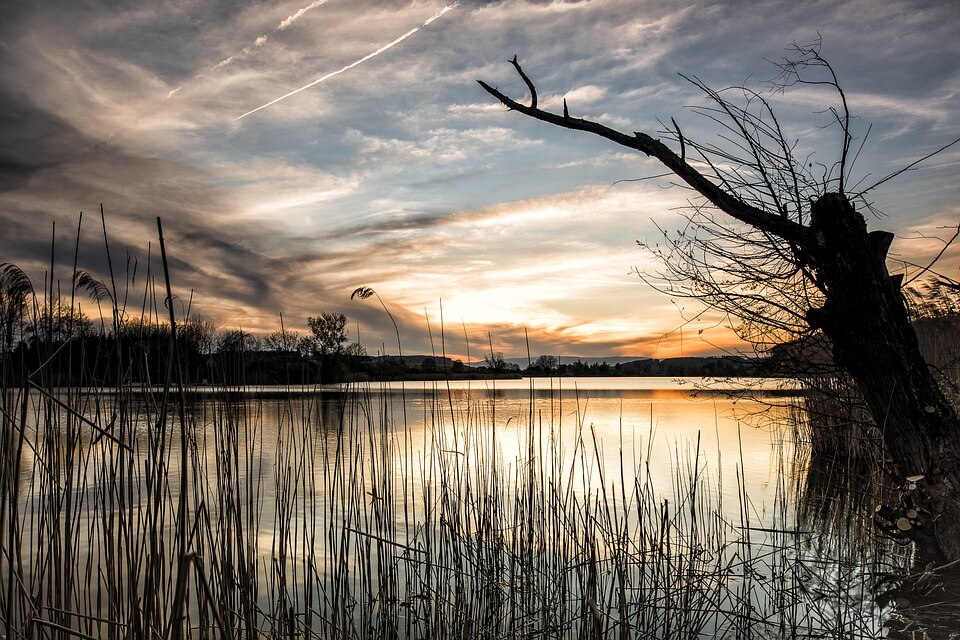Protecting Aquatic Ecosystems Through Vegetation and Chemical Control

Balanced aquatic ecosystems have suffered from human activity throughout history, creating conditions that turn picturesque bodies of water into diseased lakes, ponds and rivers. Typically, the problem begins with the introduction of chemicals or plants foreign to the local ecosystem. Altering the floral or chemical profile of a body of water may spark a critical change, causing algae blooms or poisoning healthy plants that help maintain aquatic balance. Protecting bodies of water through chemical and plant control preserves a healthy ecosystem.
Chemical Imbalances Destroy Ecosystems
Due to frequent use in households and businesses, local run-offs that contain phosphorus and nitrogen from commonly used products such as detergents often seep into bodies of water. Sometimes, floods transport these and other chemicals to ponds, lakes and rivers that would normally never endure exposure to pollutants. Depending on the contaminant that enters the water, you may risk a die-off of healthy plants or an algae bloom fueled by an excess of nutrients in the water.
When an aquatic ecosystem becomes chemically unbalanced, the list of consequences range from water that smells foul to the extinction of local fish and animals that drink from a pool or stream. At the first sign of contamination, you need tests to determine an immediate course of action.
Control solutions include chemical and biological remedies that return the ecosystem to a better balance. Installing and promoting the growth of aquatic plants and bacteria will absorb excess nutrients and can prevent severe algae blooms. You may also need benign chemicals that neutralize pollutants without risking collateral damage.
Aquatic Flora Determines a Healthy Ecosystem
Nature evolves to survive. Some plant species take this principle to the extreme, decimating rival species that can’t compete for nutrients and other resources. For local species, one of the most threatening prospects is a non-native plant seizing a foothold on vital habitat. Plants, bacteria and algae can alter an aquatic ecosystem irrevocably.
Depending on the composition of a body of water, some ponds and lakes may be susceptible to algae blooms, which create growing “death zones” that deprive native species of oxygen. The warmth, acidity and nutrient profile of water create the conditions possible for this type of species takeover. Sometimes, installing a patch of floating plants denies algae the sunlight they need to propagate. However, when blooms blossom quickly, an eco-friendly algaecide may be necessary to eliminate the threat.
Pest species represent another risk to healthy aquatic habitats. Similar to chemical contaminants, extreme weather and floods transport invading species into a body of water, affecting local flora. Since these pest species of plants tend to be heartier than others, they may spread quickly, commanding the habitat that local plants need. In a worst-case scenario, an invader may destroy all local species, depriving fish and animals of a local source of food.
Pest plants may require an injection treatment to stem the root of the invasion. At other times, they may respond better to eco-friendly herbicides targeting specific species. Removing all invading species helps to ensure that a diverse portfolio of flora thrives, feeding the health of the entire ecosystem.
Delicate Ecosystems Require Attention
Aquatic ecosystems represent a delicate resource that we need to help preserve. When badly contaminated, these habitats are extremely difficult to return to pristine form, requiring decades of effort. At the first sign of trouble, introduce vegetation or chemical control to prevent your local body of water from becoming irrevocably unbalanced. Talk to us today at Coastal Spray to get the right kind of help. We operate in Texas, California, Illinois, Indiana, Kentucky, Louisiana, Michigan, Mississippi, Ohio and Tennessee. Our 20 years of experience in restoring lakes, rivers, bayous, ponds and other waterways will help clean up your water-contamination problems faster.
Sources:
https://www.epa.gov/nutrient-policy-data/control-and-treatment